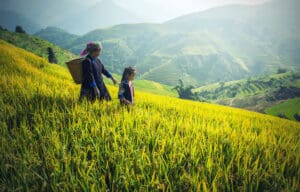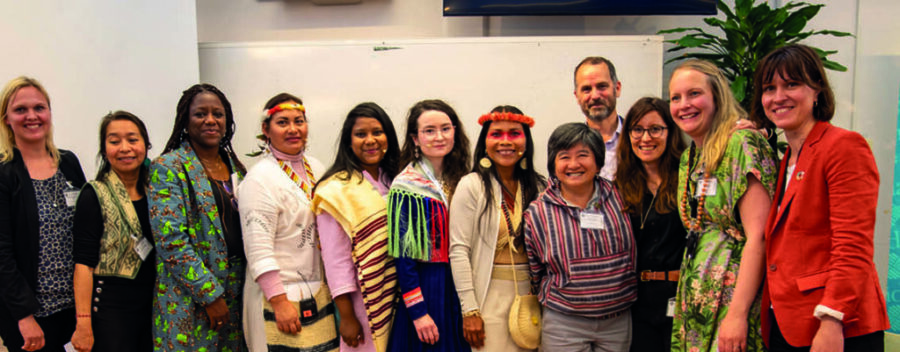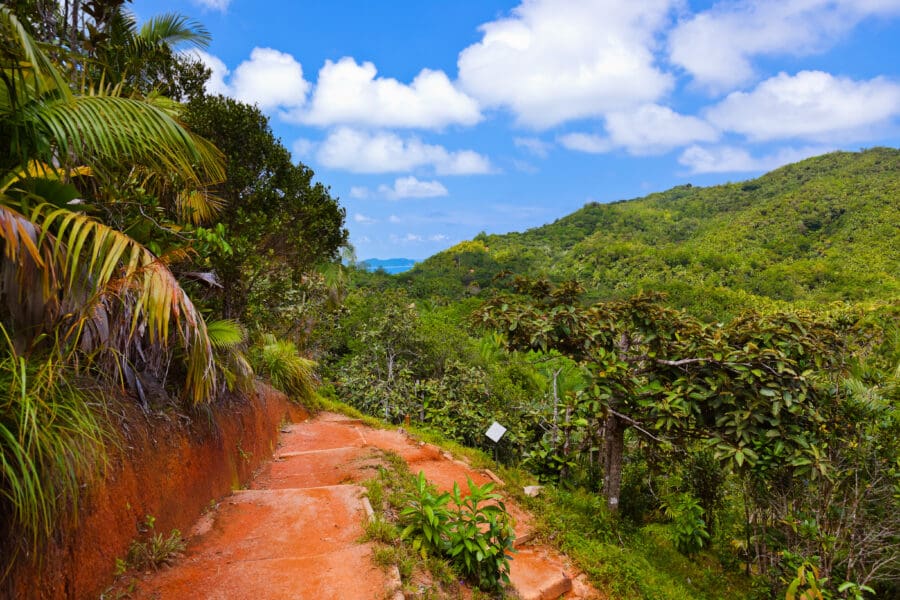Despite the critical role Indigenous Peoples and local communities play in protecting forests and nature, only a small fraction of these communities enjoy secure rights to own, manage, and control their lands and resources. They often have little access to the support, services and funding required to protect the world’s forests and to pursue sustainable livelihoods. In fact, new RRI and Rainforest Foundation Norway research shows that only 17% of global climate and conservation funding intended for Indigenous Peoples and local communities actually reaches them.
In other words, where is the money?
“Too often, grand plans get laid by donors at international events on big fancy stages; pledges are made, and then there is no follow through. This is what we cannot allow to happen on this occasion. The stakes are too high,” said Darren Walker, President of the Ford Foundation in his opening remarks.
For Peter Kitelo, Executive Director of the Chepkitale Indigenous People Development Project, many Indigenous and local communities are unaware that this Pledge exists, yet have projects that fit the funding criteria. “The biggest challenge of funding for small organizations like CIPDP and communities like the Ogiek of Mt. Elgon, is information.” In other words, Indigenous and local communities are often already excluded because of information asymmetries. Awareness raising and information sharing must be built in by design.
Joseph Itongwa Mukumo, Coordinator of the Indigenous Peoples and Local Network for the Management of Forest Ecosystems of Central Africa (REPALEAC), echoed similar sentiments in the panel discussion, suggesting that the Pledge donors go one step further, beyond simply communication and information sharing, so that changes become a reality on the ground. “Mechanisms must be aligned with activities in the communities and vice versa.”
Clemencia Carabalí, Presidential Advisor for Women’s Equity in Colombia, also raised a critical issue: “The $1.7 billion Pledge made by governments and donors is a step in the right direction. However, if we truly want to repair the historical gap of direct funding that has reached Indigenous, Afro-descendant and local communities, then this Pledge must also consider the even bigger funding gap that still exists for Indigenous, Afro-descendant, and local women and girls.”
Research has shown that Indigenous women’s organizations received only 0.7% of all recorded human rights funding between 2010 and 2013, despite using, managing, and conserving community territories that comprise over 50% of the world’s land. Even where resources are reaching Indigenous women’s organizations, they tend to be inadequate and short-term. Additionally, new research shows that only 27 percent of IP and LC tenure and forest management funding included gender-related keywords, despite the essential role of women in IP and LC forest management and their notable exclusion from many governance structures and forest management decisions.
Sara Omi, President of the Territorial Women Leaders of Mesoamerica of the Mesoamerican Alliance of Peoples and Forests, said:
“We can’t talk about climate finance whilst leaving behind Indigenous, Afro-descendant, and local women and girls. The Pledge must go beyond funding and should commit to embedding a rights-based approach in the design and implementation of all projects.”
In response, it was clear the donors and government representatives on the call were hearing what the rightsholders were saying and wanted additional conversations.
“We want to work together with you and learn from you on how best to do it,” said Chris Penrose Buckley, Senior Land Policy Lead, Government of the UK. “We need to hear you and talk to you to understand better how to structure [these financial mechanisms] so that you have a say, a role in the governance, and that they reflect the needs on the ground.”
“Listening to the Indigenous and local organizations as to what their needs are must be our highest priority. Funders must approach this work with great humility and great humanity. We do not have all the answers, so we must rely on—and need—partners, especially the Indigenous and local community organizations, to help us be more effective and more accountable,” said Darren Walker.
Some key questions that were answered throughout the dialogue include:
- The $1.7 billion Pledge is not a centralized fund, but rather, it is made up of many individual donor commitments and some of these funds have already been allocated. Currently, funds must be accessed through each individual donor’s unique funding mechanism.
- Current projects and countries eligible for funding under this Pledge include: 1) tenure and/or forest governance reforms; 2) projects led by Indigenous Peoples and local communities; 3) capacity building projects or initiatives amongst Indigenous and local organizations and networks; and 4) tropical forest and ODA-eligible countries.
- The Pledge is not just about money. One of the Pledge’s priorities is to shift power away from top-down funding models based in the global North toward leveraging more national and regional Indigenous and locally led funds and initiatives. This includes building capacity at the local level.
What will be the Donor Working Group’s next steps?
- The Foreign, Commonwealth and Development Office (FCDO) of the UK will maintain high-level visibility of the Pledge at CoP27 in Sharm el-Sheikh, Egypt, and deliver the first Pledge report;
- Develop the Pledge’s guiding principles and practices;
- Build political momentum and help to set the foundation for future pledges in 2025, 2030 and beyond.
Underlying all of these questions and funding commitments remained one crucial question. How are donors and governments partnering with Indigenous Peoples and local communities to recognize their rights?
“There are a number of cases where Indigenous Peoples have been working with governments, directly and indirectly, specifically on thematic issues like climate change, biodiversity, forestry, health, and education, but when it comes to rights—land rights, collective rights, self-determined development—governments are often falling behind,” said Dr. Shree Kumar Maharjan, Deputy Secretary General of the Asia Indigenous Peoples Pact (AIPP). “Most governments do not prioritize Indigenous Peoples in their policies, programs or plans.”
“Our value, relevance and importance to humankind is greater than any amount of money or bank account. [Indigenous Peoples and local communities] bring to the table tangible assets—forests, wildlife, rivers, and fruits, as well as our intangible assets—culture, language, and knowledge,” said Margarita Antonio, a Miskitu woman from Nicaragua, Program Coordinator of the AYNI Indigenous Women’s Fund at the International Forum on Indigenous Women, and dialogue moderator.
“We do not need to transform these assets into money for them to serve their purpose. We need them to be alive as we are as Peoples. And we need our rights to those assets to be fully acknowledged.”






